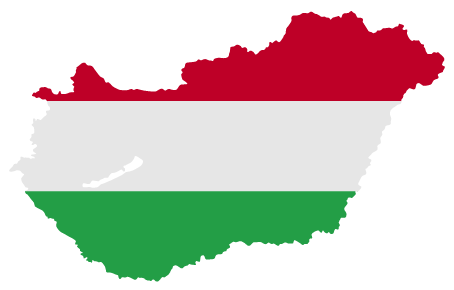Language History
Although debatable by some, Hungarian is believed to belong to the Finno-Ugric branch of the Uralic language family. It famously became its “own language” over 3000 years ago, and in 500AD, it gained a lot of influence from the Turkic languages, developing several words related to agriculture. It was in 900AD when Hungarian was impacted by Slavic and Romance languages, after the Hungarian people migrated to the Carpathian Basin.
In 1000AD, the Kingdom of Hungary was formed and it was during this time when the Latin alphabet was adopted by Hungarian. The first Biblical translation into Hungarian occurred around 1430AD. Several crucial changes were made to the language in the 18th century by a group of writers who wanted to make it suitable for use by the scientific community, leading to form into the modern language that it is today.
[/vc_pangea_service_desc_block][/vc_column][/vc_row][vc_row css=”.vc_custom_1621802227154{background-color: #f1f2f0 !important;}” el_class=”bg-grey”][vc_column css=”.vc_custom_1558445967850{margin-top: -90px !important;margin-bottom: -70px !important;}”][vc_pangea_custom_block layout=”center” button_color=”#d15f45″ content_font=”Open Sans” button_popup_form=”” button_text=”Get in Touch” button_link=”url:https%3A%2F%2Fportal.stg-wpml.pangea.global%2Frequest-quote%2F|||”]According to The Culture Trip, Hungarian is spoken by approximately 13 million people worldwide.
[/vc_pangea_custom_block][/vc_column][/vc_row][vc_row css=”.vc_custom_1557920359208{margin-bottom: -50px !important;background-color: #ffffff !important;}”][vc_column css=”.vc_custom_1557920302161{margin-top: -50px !important;margin-bottom: -30px !important;}”][vc_pangea_custom_block layout=”center” heading_font=”Futura Std” content_font=”Open Sans” title=”Where is Hungarian Spoken?”]Hungarian is the official language of Hungary, however it is also a popular language spoken in other countries such as Slovakia, Serbia, Slovenia, Ukraine, Croatia and Austria. [/vc_pangea_custom_block][/vc_column][/vc_row][vc_row el_id=”benefits-container” css=”.vc_custom_1621802231226{margin-top: px !important;background-color: #f1f2f0 !important;}” el_class=”bg-grey”][vc_column width=”1/2″ css=”.vc_custom_1573130901762{margin-top: 65px !important;margin-bottom: 50px !important;}”][vc_pangea_custom_block layout=”center” background_color=”” content_font=”Open Sans” css_custom_id=”text-near-bubble” title=”FACT” background_image=”5847″]Apparently, the word “Hungarian” derives from the word “Onogur”, which is the title given to a Turkish tribe, meaning “ten arrows”.[/vc_pangea_custom_block][/vc_column][vc_column width=”1/2″ css=”.vc_custom_1573479452387{margin-top: 10px !important;margin-left: -30px !important;}”][vc_pangea_custom_block layout=”center” background_color=”” content_font=”Open Sans” css_custom_id=”text-near-bubble” title=”Did you Know?” background_image=”5847″]The Hungarian alphabet has 44 letters. In fact, some of them have 2 or 3 parts. For example, ‘dzs’, pronounced as ‘j’, or ‘sz’, corresponds to ‘s’.
[/vc_pangea_custom_block][/vc_column][/vc_row][vc_row el_id=”benefits-container” css=”.vc_custom_1621802231226{margin-top: px !important;background-color: #f1f2f0 !important;}” el_class=”bg-grey”][vc_column width=”1/2″ css=”.vc_custom_1573130901762{margin-top: 65px !important;margin-bottom: 50px !important;}”][vc_pangea_custom_block layout=”center” background_color=”” content_font=”Open Sans” css_custom_id=”text-near-bubble” title=”FACT” background_image=”5847″]Apparently, the word “Hungarian” derives from the word “Onogur”, which is the title given to a Turkish tribe, meaning “ten arrows”.[/vc_pangea_custom_block][/vc_column][vc_column width=”1/2″ css=”.vc_custom_1573479452387{margin-top: 10px !important;margin-left: -30px !important;}”][vc_pangea_custom_block layout=”center” background_color=”” content_font=”Open Sans” css_custom_id=”text-near-bubble” title=”Did you Know?” background_image=”5847″]The Hungarian alphabet has 44 letters. In fact, some of them have 2 or 3 parts. For example, ‘dzs’, pronounced as ‘j’, or ‘sz’, corresponds to ‘s’.
Amharic is the second most spoken Semitic language in the whole[/vc_pangea_custom_block][/vc_column][/vc_row][vc_row css=”.vc_custom_1621802235823{margin-top: -30px !important;padding-top: 50px !important;background-color: #f1f2f0 !important;}” el_class=”bg-grey”][vc_column css=”.vc_custom_1564058015924{margin-top: -30px !important;}”][vc_pangea_quote_block font=”Futura Std” quote_text=”“Hungarian is the oldest among all Euro-Asiatic languages.””][/vc_column][/vc_row][vc_row css=”.vc_custom_1557920359208{margin-bottom: -50px !important;background-color: #ffffff !important;}”][vc_column css=”.vc_custom_1557920302161{margin-top: -50px !important;margin-bottom: -30px !important;}”][vc_pangea_custom_block layout=”center” heading_font=”Futura Std” content_font=”Open Sans” title=”Hungarian Dialects”]
• Central Transdanubian • North-eastern Hungarian • Palóc • Southern Great Plains
• Southern Transdanubian • Tisza–Körös • Western Transdanubian • Oberwart –
spoken in Austria • Csángó – spoken in Romania
| Hungarian | Translation | Wrong Meaning |
|---|---|---|
| blokk | receipt | block |
| klozet | toilet | closet |
| paszta | paste | pasta |
| ráció | reason/rationality | ratio |
Hungary Population:
9,655,361
Internet Users:
8,588,776
Penetration:
89.0%
As of 2019. Source:
www.internetworldstats.com
• Remember! There is no grammatical gender in Hungarian. There aren’t even any separate words for ‘he’ and ‘she’.
• Don’t forget! Hungarian verbs have two conjugations – definite and indefinite.
• Bear in mind! Unlike English sentences which are structured with subject-verb-object, Hungarian is ordered by pragmatics – words are structured depending on how much emphasis the speaker would like to give each one.
[/vc_pangea_custom_block][/vc_column][/vc_row][vc_row content_placement=”middle” css=”.vc_custom_1573131642872{margin-top: px !important;background-color: #ffffff !important;}”][vc_column css=”.vc_custom_1568124516658{margin-top: 65px !important;margin-bottom: 50px !important;}”][vc_pangea_custom_block layout=”center” background_color=”” content_font=”Open Sans” css_custom_id=”fact-card” title=”Did you Know?” background_image=”5847″]Hungarian is one of the only languages that stays true to its roots. It contains 68% of its original words (etymons). This drastically compares to the 4% retained in English language, or 5% in Hebrew.
Amharic is the second most spoken Semitic language in the whole[/vc_pangea_custom_block][/vc_column][/vc_row][vc_row css=”.vc_custom_1621802254229{background-color: #f1f2f0 !important;}” el_class=”bg-grey”][vc_column css=”.vc_custom_1558438241711{margin-top: -50px !important;}”][vc_pangea_custom_block layout=”center” content_font=”Open Sans”]Are you looking for professional Hungarian translation services? Get in touch with Pangea Global! We’ll hook you up with one of our professional linguists who will provide you with accurate and reliable Hungarian localization services, copywriting, voice overs and more![/vc_pangea_custom_block][/vc_column][/vc_row][vc_row css=”.vc_custom_1621802262922{background-color: #f1f2f0 !important;}” el_class=”bg-grey”][vc_column css=”.vc_custom_1557924920503{margin-top: -30px !important;margin-bottom: 40px !important;}”][vc_pangea_cta_button button_text=”Get In Touch” button_link=”url:https%3A%2F%2Fstg-wpml.stg-wpml.pangea.global%2Fquote%2F|||”][/vc_column][/vc_row]




